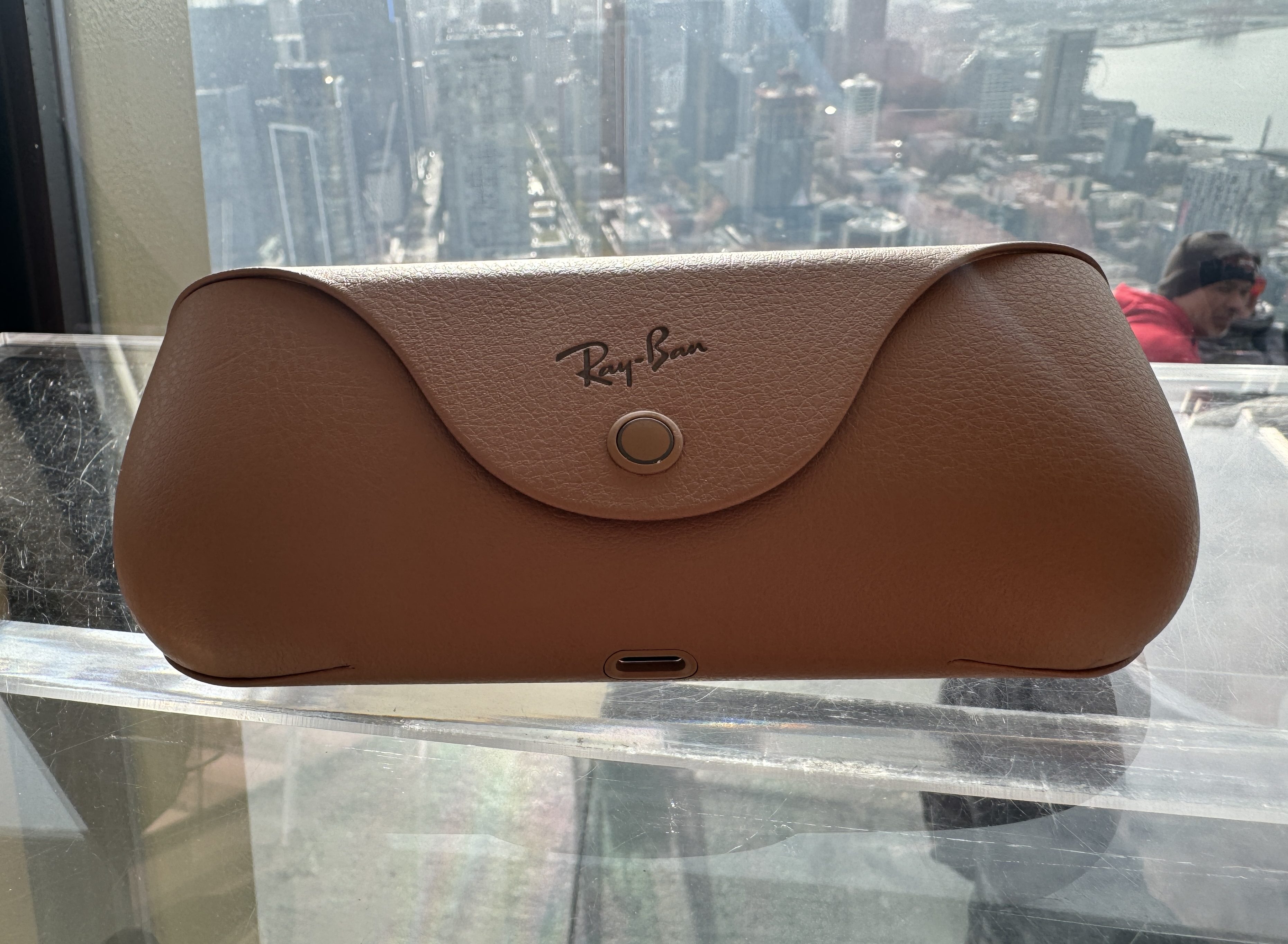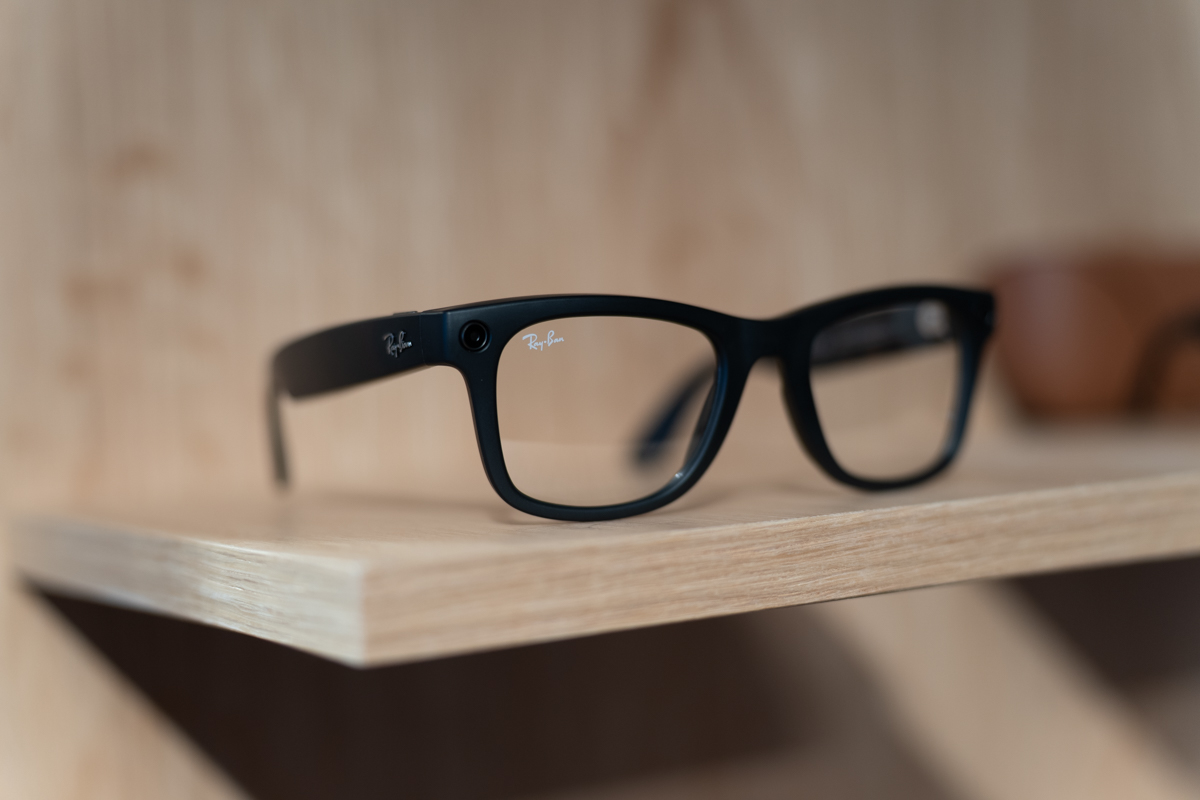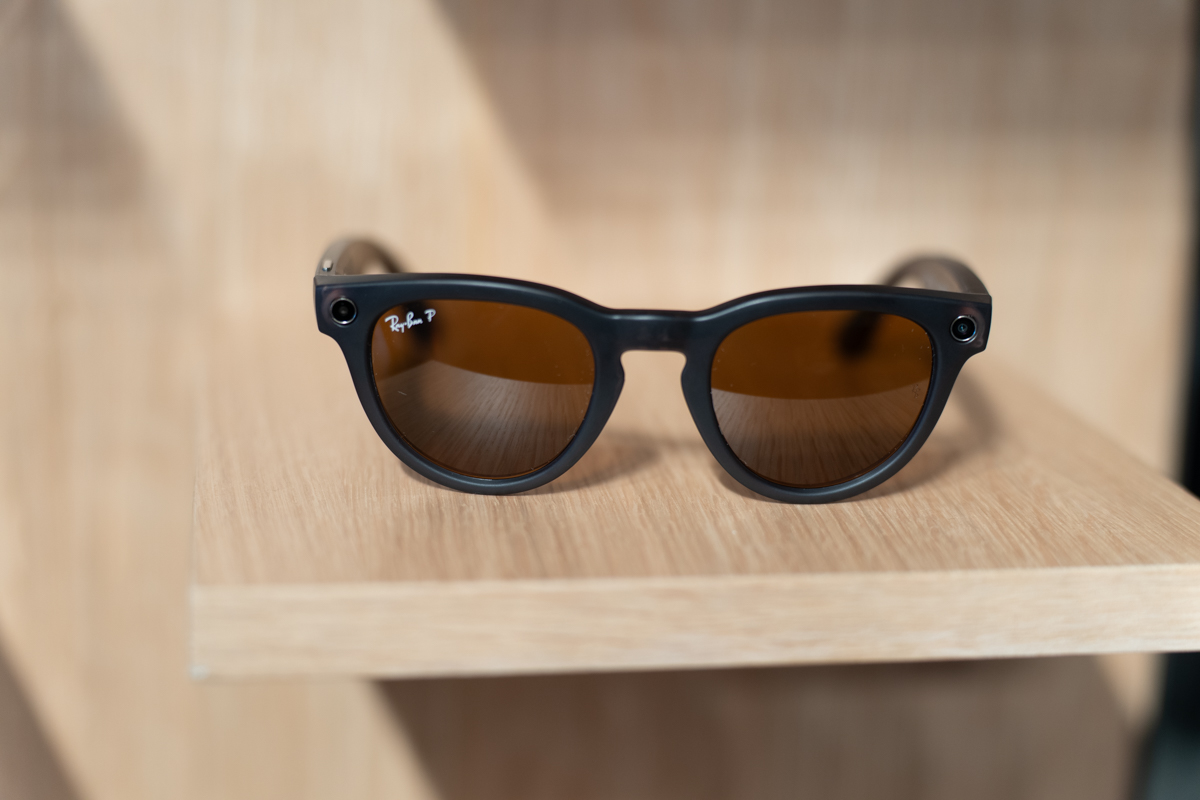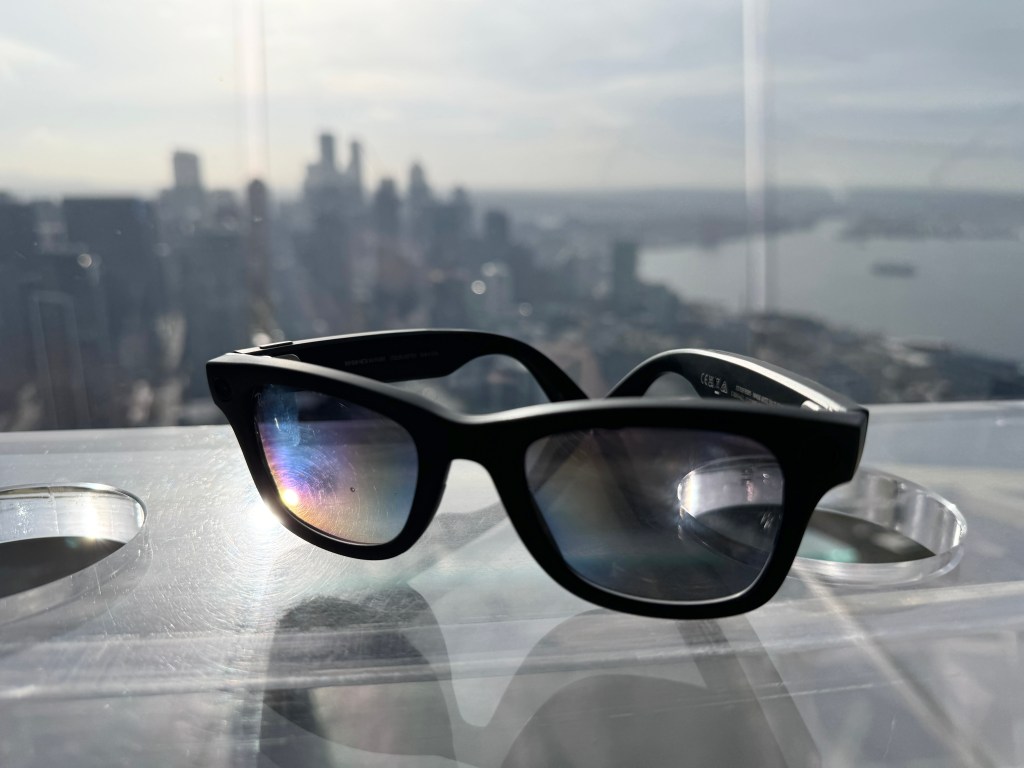Somewhere between the Ray-Ban Meta and Meta Quest 3 sits an ideal mixed-reality headset. It’s slim, light, offers hand tracking and passthrough and livestreams video when the moment calls for it. It’s designed to be worn inconspicuously outdoors, until the time comes for content capture.
The Meta Quest Ray-Ban is a fantasy at the moment — albeit one that points in the direction of where its makers think this is all headed. Presently, the Ray-Ban Meta and Meta Quest 3 are very different devices, with little in the way of overlap, beyond being head-worn products with built-in sensors.
The Meta Quest 3 is a mixed-reality headset designed to be worn exclusively indoors. It’s light, perhaps, compared to other headsets of its ilk, but wearing the thing while walking around outside frankly sounds a bit miserable. That’s precisely the use case the Ray-Ban Meta was designed for: freedom of movement outside the house that’s designed to go (mostly) unnoticed.
Just prior to writing this, I slipped a pair on, before the JFK airport mobility cart drove my sciatica-ridden ass to the gate. I would say the pair was inconspicuous but for the fact that I was wearing a pair of sunglasses indoors. Well, that and the extremely necessary recording lighting that flashes on so you can’t creep shoot folks without their knowledge. Here’s some of that video:

We got our first glimpse of the Ray-Ban Meta at a briefing just ahead of the recent Connect conference. I was genuinely impressed by the industrial design the join team came up with. Most folks would be hard-pressed to distinguish the charger from a standard Ray-Ban classic eyeglass case. It’s a little thicker than some, sure. A bit heavier. More rigid. But the team was able to make surprisingly few concessions.
There are a lot of clever touches here. In the place of a snap is a ring. Open the case and it glows green when fully charged and orange when not. The orange starts blinking when the battery is low. Space has been maximized inside. The battery sits directly beneath the glasses’ folded temples. In front of this is a dock with two charging pins that lie flush with a pair of contact pads hidden on the underside of the glasses’ bridge, held in place with magnets and a small tab.
The USB-C port is located on the outside bottom of the case, allowing it to sit on its back while being charged. Directly above this on the case’s rear is the Bluetooth pairing button. The case is slimmer than the last gen and can be carried in a pocket comfortably.

Meta says the glasses get “up to” four hours on a charge, while the case gets a total of eight charging cycles, for a grand total of 36 hours. As the company notes, “Battery life varies by use, configuration, settings and many other factors.” That’s the case with all tech, of course, but I did notice that video is a power drainer.
The companies really leaned into the style side of things here (not a bad decision when designing tech meant to be worn on the body). There are two main designs for the glasses. There’s the classic Wayfarer (which is probably what you think of when you think of sunglasses) and the new Headliner (not dissimilar from Wayfarer, but significantly more rounded on the top and bottom).
According to Meta, there are 150 design combos possible, when you factor in all of the different design options, including frame color, style and lenses (including sunglasses, clear, prescription, transitions and polarized).
The temples are thicker than most sunglasses — to be expected, seeing as how they contain the speakers and other components (there’s a transparent option, if you want to see for yourself) — but again, the designers have done a good job keeping size down, all things considered. And again, while slightly heavier than a standard pair of Wayfarers (50.8 g vs. 44 g), you can wear them comfortably all day if you want to (or at least the less than four hours the battery lasts).

There’s a touchpad on the outside of the left temple. Swiping back and forth will adjust the volume (other features can be customized in-app). It also doubles as a control panel for livestreaming, since you likely don’t want to futz with your phone or keep using the wake word. A tap can check Instagram or Facebook comments and viewers in real time. The capture button sits next to the hinge on the left temple.
There is a pair of small circular modules on the end pieces. They look identical, for the sake of symmetry, but serve very different — albeit related — functions. On the top right (when facing the glasses) is the 12-megapixel camera. On the top left is an LED that turns on to alert people in your vicinity that you’re recording.
When the light is covered, the glasses send an audio alert that they’ve stopped recording. This is to avoid people sticking a piece of electrical tape to hide the light. Meta says they didn’t hear of any specific examples of this happening, but they almost certainly got that feedback. Again, privacy is paramount for a device like this, especially since it’s something that most people around you don’t know exists. When the battery is low, you’ll get a spoken alert and the light will blink orange and turn red right before shutting down. The light will blink white when receiving a call, do a single flash when taking a photo and glow steadily when recording.
When pairing, it flashes blue, going solid when connected. The pairing process is pretty straightforward. You’ll need to download the Meta View app, choose between Meta Ray-Ban and Ray-Ban Stories and allow bluetooth to connect. Images and video will save to the glasses’ 32 GB of internal storage (that’s roughly 500 photos or 100 videos at the maximum 30 seconds apiece). You’ll need to tap “Import” inside the app to connect via Wi-Fi and download the contents to your phone. You can also set it up to auto-import via settings.

Once everything is paired, put the glasses on and open either Facebook or Instagram to livestream. Tap the plus icon and it will bring you to the livestream screen. Your phone’s camera is, understandably, the default, but double pressing the capture button will switch over to the glasses. Livestreaming is probably the single biggest killer app Ray-Ban Stories was missing.
There are barely visible down-firing speakers on the bottom of the temple tips. When I first tried the speakers in an otherwise silent room, they sounded surprisingly loud and clear. They’re open-ear speakers, rather than bone conduction, which has its pluses and minuses. Bone conduction tends to be quite quiet but does a decent job with ambient noise, since it’s arriving at your eardrums through a different method.

As expected, I had to turn up the volume quite a bit among the airport din. I would recommend them for quieter environments, where possible, but obviously that isn’t always an option. Sound is integral to the headphones, beyond music listening. For instance, there’s an audible shutter click when you take a picture.
Once you get the hang of the various button presses, the glasses are a cinch to use. After a dozen or so times in Seattle, I finally went full tourist mode to check out the video capture and still capabilities. I also did a bit of livestreaming to both Instagram and Facebook. The 12-megapixel stills are good in a pinch. I won’t be replacing my iPhone camera any time soon, but the shots are certainly suitable for social media, and the built-in ML does a fine job keeping subjects in focus – one of my bigger potential concerns. The color balance did struggle a bit with the red glow of neon signs in the market.

I started things with a livestream of Pike Place market this morning. The experience is a frictionless one that just involves swapping the phone camera for the Ray-Ban’s. No word on when – or if – the functionality will be coming to non-Meta owned platforms, but I wouldn’t be entirely surprised if the company just keeps it in the family here.
Walking around, you would be surprised at how good your head is at keeping a shot stabilized. Again, the 1080p video isn’t the best you’ll get on a mobile device, but it handled the mixed lighting of Pike Place and the bright, overcast skies atop the Space Needle. When wearing them, you’ll find yourself doing a lot of pans with your head to take everything in. The glasses also handled audio quite well, both my own voice and the ambienty, touristy sounds of my surroundings.

If you end up trying them out, I would caution to take everything for a test run before going live. It’s surprisingly easy to forget you’re wearing them for a second and, say, look down at your phone or at something else you wouldn’t wanted streamed live to the internet. There’s always a learning curve with these sorts of new computing platforms.
There are on-board microphones as well, which listen for the “hey Meta” wake word. Voice certainly makes sense on a device like this. It can be used to take a picture, stop and start video and adjust volume (turns out voice is kind of an annoying way to do the latter). You can also ask the glasses for the time, weather and how much battery is left. You can also ask Alexa-style questions, and Meta AI will attempt to answer. That’s currently only available here in the U.S. through an open beta.

The price starts at $299 for standard lenses. Polarized run $329 and transitions $379. Prescription lenses are on a sliding scale. The price will almost certainly be a deterrent for many — and understandably so. Ultimately, you need to ask yourself how much value a face-worn camera will bring to your life. If you make a living livestreaming, it may make sense. It’s a lot to pay, however, for sheer novelty.
It’s worth noting that future updates will bring more value to the device, including sign translation (through voice) and the ability to identify landmarks in front of you. One can see the future of head-worn computing laid out in front of your face — though it’s still going to be a while before we get there.

































Comment